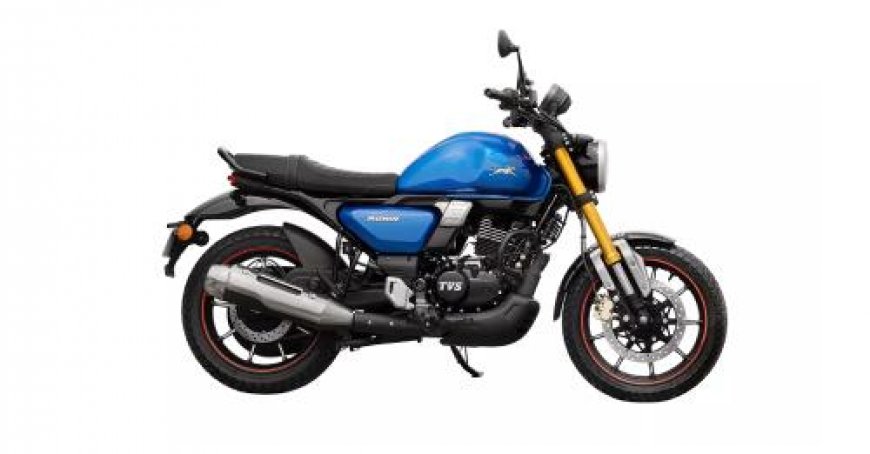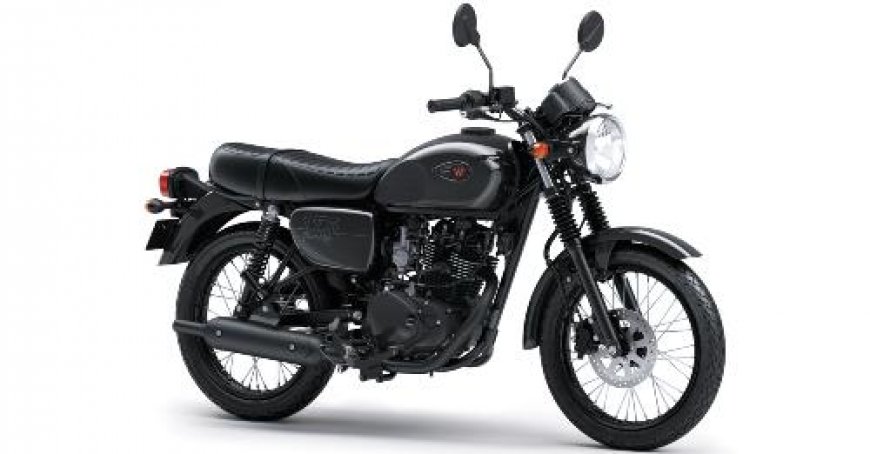Kawasaki W175 vs TVS Ronin: Comparison
Apart from performance, the TVS Ronin has a good suspension setup. It won't let you lament the rideability it offers.

For your reference, both bikes are entry-level offerings at their respective companies, being the only cruiser bikes in their portfolios. Further, if you compare these two bikes with each other, you'll notice differences in pricing, looks, and performance. That said, there is also a difference in terms of sales. You also know buyers usually opt for those bestselling products. And in this comparison, the TVS Ronin is among the bestselling TVS bikes in the business.
On the contrary, the Kawasaki W175 might have given a respectable performance in terms of sales if the Japanese bikemaker had done aggressive marketing. That said, they could have also revamped their lineup as per the current tastes and preferences of the buyers. But it is also possible that they don't want to focus on cruiser bikes as much as they do on their sports bikes. Let's digress on that.
So, let's proceed and understand how these two cruiser bikes stack up against each other. Let's begin, then!
Specifications
For starters, let's talk about the Kawasaki W175 specifications. Under Suzuki's Double Cradle Frame of steel, it has a 177cc single-cylinder, air-cooled engine, which churns out 12.8 bhp at 7500 rpm and 13.2 Nm of torque at 6000 rpm.

The W175 has the lowest engine output of all the Suzuki bikes.
Its rear wheel receives power via a standard five-speed manual transmission. Considering the price of this bike, which is similar to the TVS Ronin but cheaper, it won't impress you with the performance it offers. Moreover, the Japanese bike manufacturer should have atleast offered an oil-cooling system at the price it sells.
This bike stores its fuel in its 12-litre fuel tank. And as far as fuel efficiency is concerned, the Kawasaki W175's mileage ranges between 42 and 46 km/l. It has an impressive fuel economy, though.
As for the suspension setup, it has front telescopic forks and Kawasaki's hydraulic-type dual-rating spring shock absorbers at the rear. The suspension works in tandem with the disc-drum brake setup. In addition, it misses out on the dual-channel ABS. Yes, that's right. It only boasts a single-channel ABS. Given the Kawasaki W175 price, the Japanese bikemaker should have offered dual-channel ABS as an option.
Just so you know, the combination of dual disc brakes and dual-channel ABS is always the best, as they can reduce the chances of mishaps.
Let's jump to the indigenous cruiser bike's specifications. The TVS Ronin also has the same type of chassis as the Kawasaki W175, i.e., the double cradle frame. This robust frame is cost-effective and underpins almost all mass-market bikes. Further, this homegrown cruiser bike, the TVS Ronin, has a single-cylinder, oil-cooled engine of 225.9cc. This engine unit makes the bike run by extracting 20.1 bhp at 7,750 rpm and 19.93 Nm at 3,750 rpm. The 225cc engine on the indigenous cruiser bike works in tandem with a standard five-speed manual transmission.
Speaking of the gearbox, it incorporates an assist and a slipper clutch. These added features make the gearshifts buttery smooth and can be pushed to their limits on the street and track as well.
When compared with the Japanese cruiser bike, the TVS Ronin has a larger fuel tank capacity, rated at 14 litres. That said, this bike also has similar mileage to its Japanese counterpart. Its mileage is onward and upward at 40 km/l.
In addition, if you want to know an expert's opinion on TVS the Ronin's rideability, check out the TVS Ronin review on autoX.
Please note that the mileage figures mentioned for these two bikes are as reported by their owners across India. Despite that, the real-world mileage will still vary with local traffic conditions and individuals' riding styles.
Thanks to the fuel injection technology, the BS6 bikes are more fuel efficient and less polluting. Before the BS6 two-wheelers rolled out, the central government had ordered the bike manufacturers to make the BS6 engines with fuel injection technology.
Further, the TVS Ronin has disc brakes as standard, unlike the Kawasaki 177 cruiser bike. TVS Motors has also offered a dual-channel ABS feature in the top-of-the-line variant. The base and mid-models have single-channel ABS.
On autoX, you can view your dream vehicle's complete specifications and features sheet alongside the latest prices.
Prices and Variants
As mentioned earlier, the Kawasaki cruiser bike is cheaper than the TVS Ronin. However, the W175 has only two variants, segregated as per the colour options. It has a starting price of Rs 1.47 lakh for the base model, the Ebony, and goes up to Rs 1.49 lakh for the top model, the Candy Persimmon Red.
In parallel, TVS Motors offers the TVS Ronin in three variants. The TVS Ronin price starts at Rs 1.49 lakh for the base model, the SS Single Channel ABS, and goes up to Rs 1.68 lakh for the top-of-the-line variant, the TD Dual Channel ABS.
All are ex-showroom prices, New Delhi, as of January 2023. It is worth mentioning that these prices are subject to change without prior notice to the customer. But don't worry! You can always access the most up-to-date price list for your dream vehicle on the autoX website.
In addition, if you want to receive alerts for job opportunities, online giveaways, and the latest automobile-related content, connect with us on Facebook, Twitter, LinkedIn, Instagram, and YouTube.

 rushilkumar27
rushilkumar27 





